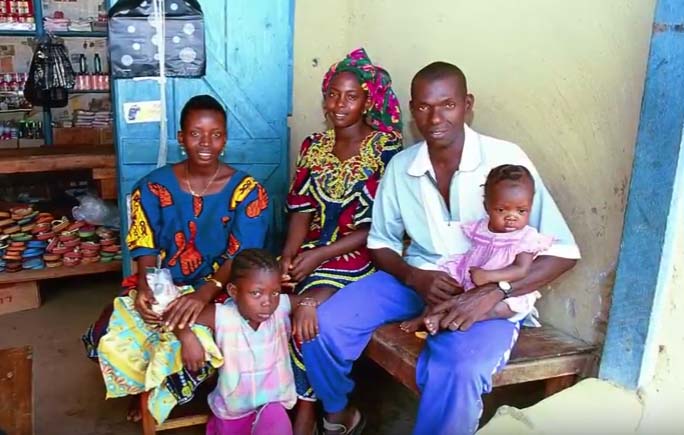
A key to ETEC infection may be in your blood

If you have blood type A, you may be more at risk of diarrhea from enterotoxigenic E. coli (ETEC). This finding was just published in a human challenge model study in the Journal of Clinical Investigation—and it has potentially widespread implications. To help explain the study and results, PATH enteric vaccines scientific director and study coauthor Lou Bourgeois offered to answer a few questions.
LAURA: So first, what is ETEC, and what is a human challenge model?
LOU: ETEC remains among the top five causes of moderate-to-severe diarrhea in infants and children in low- and middle-income countries (LMICs) and is the leading cause of traveler’s diarrhea. Infections can range from mild to severe. Among infants in LMICs, the high ETEC burden is associated with an increased risk of death and stunting. ETEC has been a long-standing World Health Organization priority for vaccine development.
Human challenge models are a type of clinical research model where people are deliberately infected with the pathogen and then treated in order to test vaccines and treatments. PATH and its partners at Johns Hopkins University, Naval Medical Research Center, National Cancer Institute, and Washington University in St. Louis have been working to improve the human challenge model for ETEC diarrhea.
LAURA: Why would anyone drink ETEC on purpose?!
LOU: These challenge studies are performed in consenting healthy adults. Subjects volunteer for these studies for a variety of reasons—they are well compensated for their time and participation, and many subjects indicate that they want to contribute to the development of new medical interventions that may help to save lives and improve health among infants and children living in developing countries.
LAURA: What led to the decision to study the ETEC challenge model?
LOU: The current model has been in use since 1971, but volunteers experienced differing rates and severity of diarrhea, despite being given comparable doses of ETEC. While examining possible causes of this variability in attack rates, investigators at Washington University observed that one of the ETEC antigens reacts to red blood cells that express the A blood group antigen. Additionally, investigators at icddr,b in Bangladesh have shown that ETEC diarrhea in Bangladesh was more common in children who had an A or AB positive blood type.
With this background data in mind, our team decided to reanalyze the results of existing human challenge studies to see whether blood type and severity of ETEC diarrhea infection were correlated.
LAURA: So, what did the study find?
LOU: The study found that human subjects positive for blood group A are more susceptible to moderate-to-severe diarrhea when exposed to the ETEC strain used in the challenge model. This work provides additional insights into the complex molecular basis of severe ETEC diarrheal illness, and it also helps inform the design of vaccines to protect those at highest risk for ETEC illness.
LAURA: What do these findings mean for those at risk of ETEC infection? If I’m not blood group A, does that mean I’m protected from ETEC?
LOU: The observation that subjects that have a certain blood group are at higher risk for ETEC diarrhea is not unique. People with the O blood group, for example, are more at risk for severe cholera. Because these people are more at risk for life-threatening disease, they should be important targets of vaccination programs and should be prioritized for aggressive treatment should severe diarrhea develop.
As shown in the article, however, subjects with other blood groups can still develop moderate-to-severe ETEC diarrhea—not to mention other types of diarrhea. So even though there’s a higher chance that the disease will be milder for other blood groups, no one is fully protected. Prevention is still important for everyone.
LAURA: What do these findings mean for the development of ETEC vaccines?
LOU: The study results highlight the potential importance of including the antigen from these studies in future ETEC vaccine formulations, since it plays a role in the increased risk for subjects with blood type A. In addition, the results suggest that LMIC populations with a higher prevalence of blood group A should be an important target for future ETEC vaccines once they are globally available.
Photo: PATH/Gabe Bienczycki.

 Video
Video
 Photo gallery
Photo gallery


